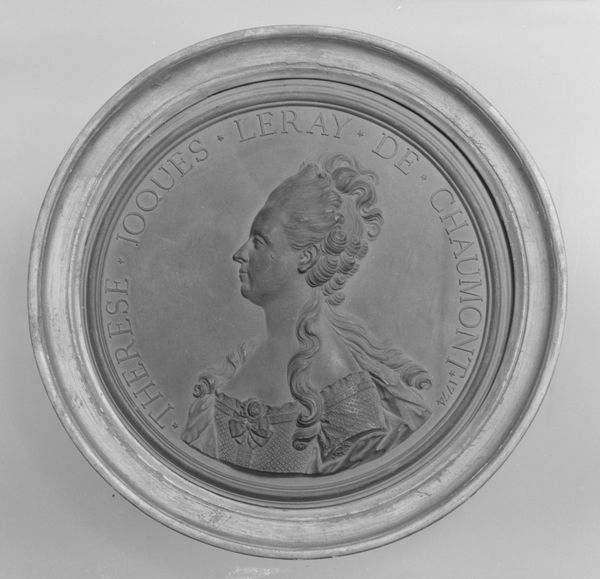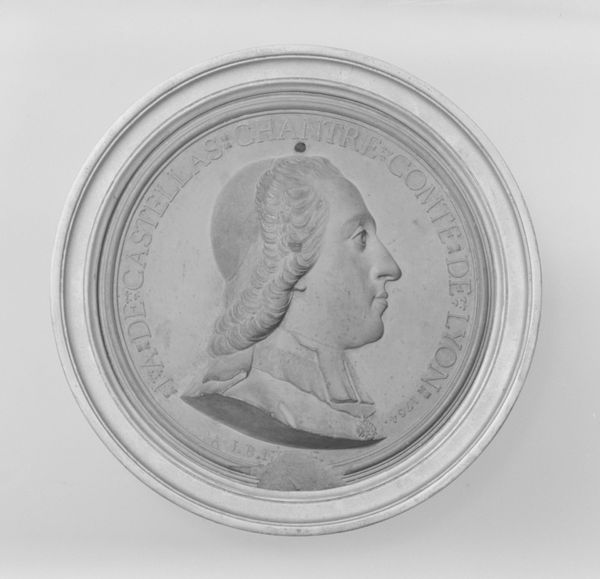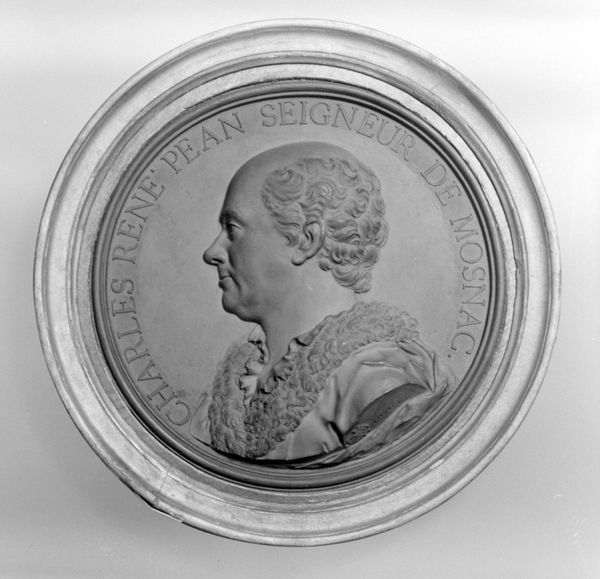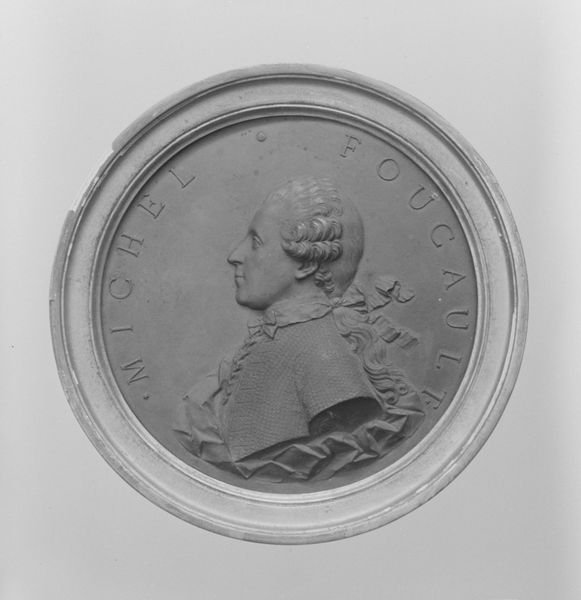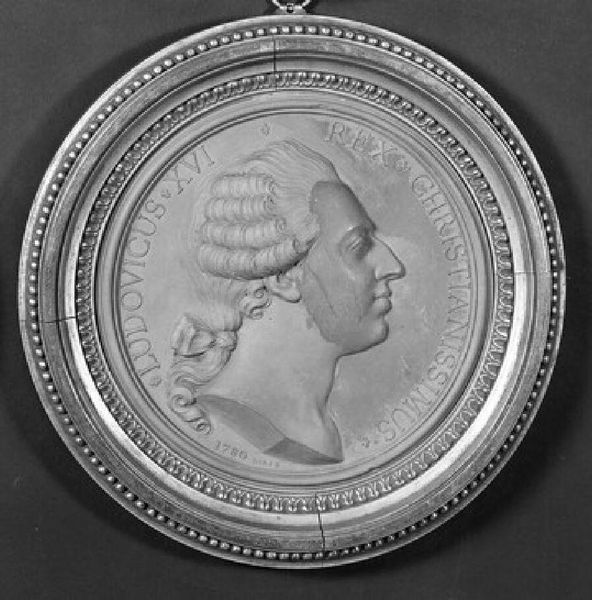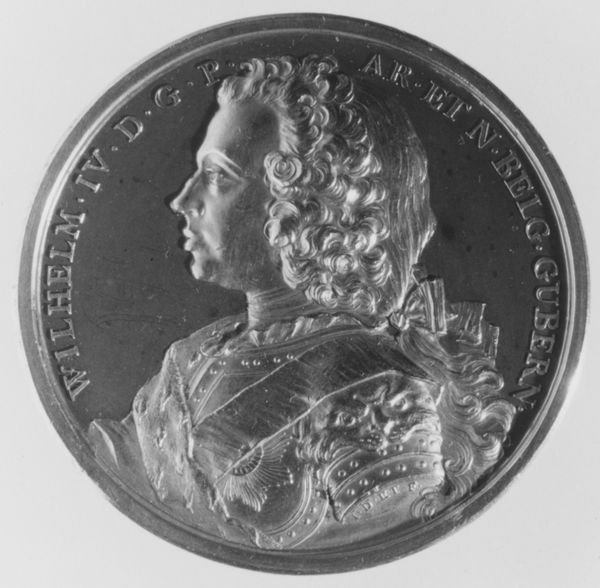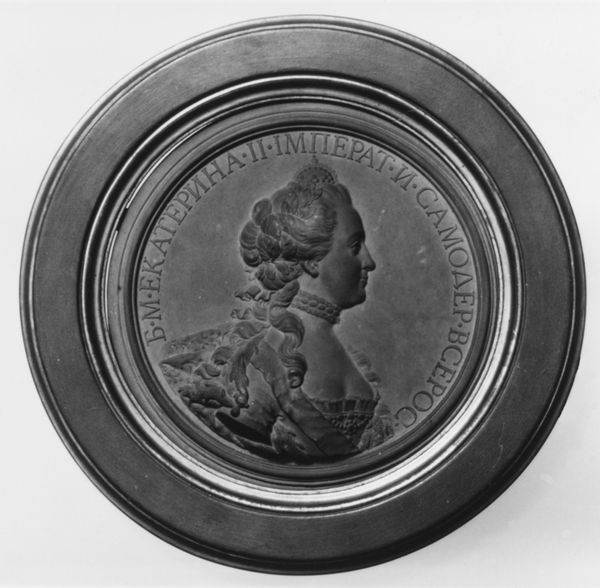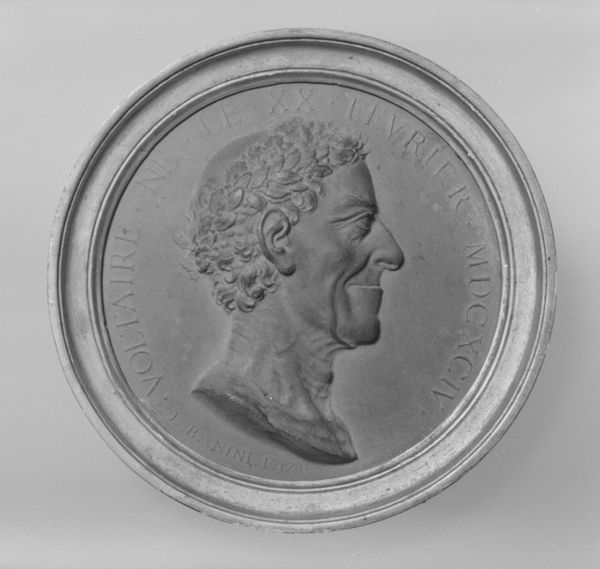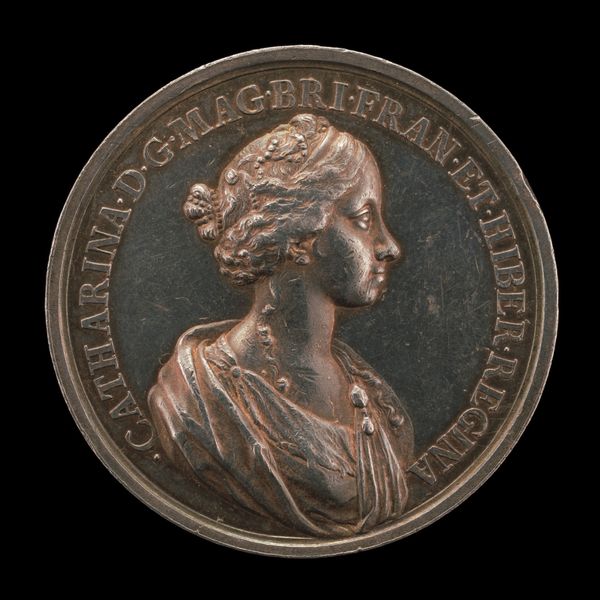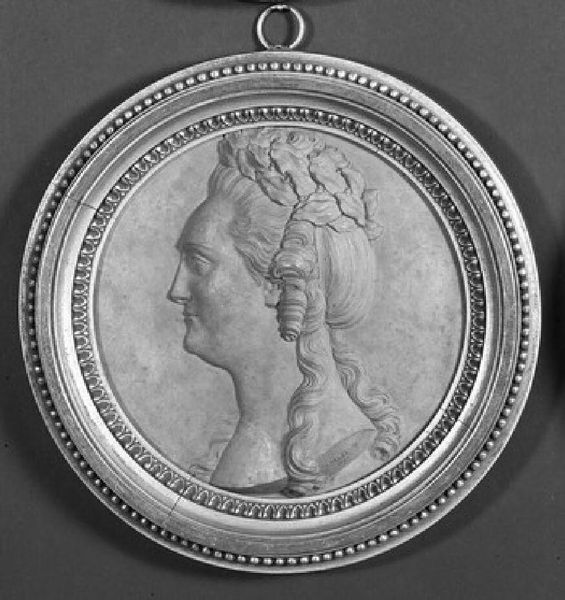
sculpture
#
portrait
#
neoclacissism
#
sculpture
#
sculpture
#
decorative-art
Dimensions: Diameter (without frame): 6 1/8 in. (15.6 cm)
Copyright: Public Domain
Curator: Here we have Jean-Baptiste Nini's 1780 terracotta sculpture, “Marie Antoinette, Queen of France," housed here at the Metropolitan Museum of Art. Editor: My first thought is restraint, and almost cold elegance. The monochrome medium flattens any hint of personality; we are presented with a face that seems impenetrable, regal perhaps. Curator: Yes, that is certainly a valid perspective. However, consider that terracotta as a medium provides a remarkable level of detail. Observe the textures of her hair, rendered with delicate precision, and the classical refinement that the artist sought to capture through the aesthetic principles that informed Neoclassicism. Editor: Of course, I concede the technical skill is evident, and the details are incredibly refined given the medium. But, stepping back from the pure form for a moment, the social and political weight of Marie Antoinette hangs heavy in my reading of it. Considering the revolution brewing just a few years later, one can interpret a certain tension, knowing her fate, that transcends the formal qualities of the piece. Curator: An interesting tension indeed! I see, that Nini emphasizes clean lines, idealized proportions, and subtle modeling, thereby highlighting Neoclassicism ideals with each curve of her cheek, a stark contrast to the excesses that defined the aristocracy at that time. It's almost an attempt to control the narrative of the Queen via aesthetics. Editor: Precisely. And yet, doesn't it ultimately underscore the disjunction between the romanticized image of royalty, of Marie Antoinette in particular, and the grim realities faced by the French people? The very fact that such an object would be commissioned speaks volumes about power and representation in pre-revolutionary France. Curator: A thought-provoking consideration. It reminds us that objects themselves exist in complex contexts. In looking at this work, a dialogue between form and historical interpretation offers such valuable and vital entry points. Editor: Agreed. It's a compelling dance, and perhaps a beautiful paradox: Marie Antoinette rendered in timeless simplicity just before her world shattered.
Comments
No comments
Be the first to comment and join the conversation on the ultimate creative platform.

